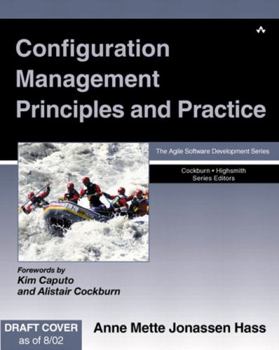Configuration Management Principles and Practice
(Part of the Agile Software Development Series Series)
Select Format
Select Condition 
Book Overview
Configuration management (CM) is frequently misunderstood. This discipline is growing in popularity because it allows project participants to better identify potential problems, manage change, and efficiently track the progress of a software project. CM is not easy, but at the same time, it need not be difficult. This book gives the reader a practical understanding of the complexity and comprehensiveness of the discipline. Many current CM practitioners rely too heavily on commercial CM tools, and fail to understand the concept as a whole. With the deeper knowledge of CM principles taught in this book, readers will be better able to manage and deliver their next project. The book is included in the Agile Software Development Series because there is growing recognition that an effective configuration management strategy is the cornerstone of a truly agile project.





